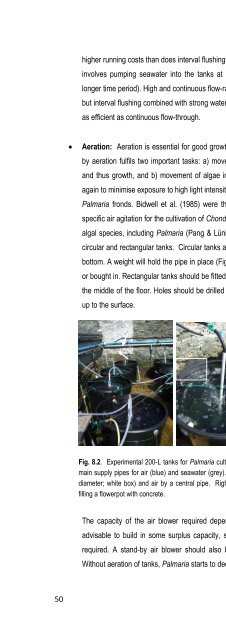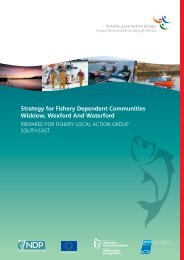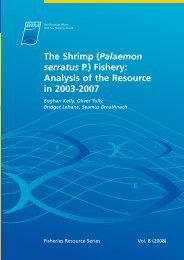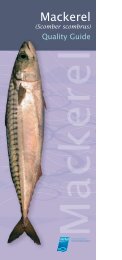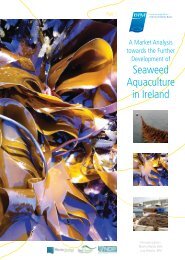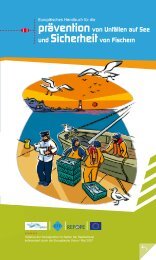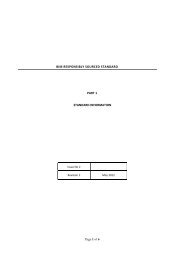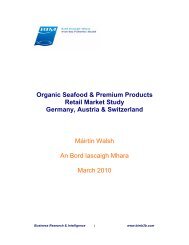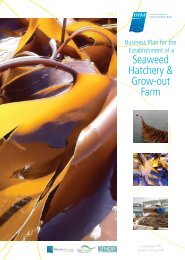Cultivating Palmaria palmata - Bord Iascaigh Mhara
Cultivating Palmaria palmata - Bord Iascaigh Mhara
Cultivating Palmaria palmata - Bord Iascaigh Mhara
You also want an ePaper? Increase the reach of your titles
YUMPU automatically turns print PDFs into web optimized ePapers that Google loves.
50<br />
higher running costs than does interval flushing, especially when bigger tanks are used. Interval flushing<br />
involves pumping seawater into the tanks at intervals to exchange a certain volume every hour (or<br />
longer time period). High and continuous flow-rates have the most positive effect on growth of <strong>Palmaria</strong>,<br />
but interval flushing combined with strong water circulation, driven by aeration in the tank, can be nearly<br />
as efficient as continuous flow-through.<br />
Aeration: Aeration is essential for good growth and health of <strong>Palmaria</strong>. The water movement created<br />
by aeration fulfils two important tasks: a) movement of algae in the water to enhance nutrient uptake<br />
and thus growth, and b) movement of algae in a circular flow from the surface to the bottom and up<br />
again to minimise exposure to high light intensities, especially in summer, and thus to avoid bleaching of<br />
<strong>Palmaria</strong> fronds. Bidwell et al. (1985) were the first to develop the principle of tumble culture using<br />
specific air agitation for the cultivation of Chondrus crispus but it has been applied to the culture of other<br />
algal species, including <strong>Palmaria</strong> (Pang & Lüning, 2004). Fig. 8.1 shows types of aeration suitable for<br />
circular and rectangular tanks. Circular tanks are best aerated by a central pipe with an air outlet at the<br />
bottom. A weight will hold the pipe in place (Fig. 8.2). Aeration devices can be home-made quite easily<br />
or bought in. Rectangular tanks should be fitted with a pipe running along the whole length of the tank in<br />
the middle of the floor. Holes should be drilled at intervals in this pipe for the air to escape and bubble<br />
up to the surface.<br />
Fig. 8.2. Experimental 200-L tanks for <strong>Palmaria</strong> cultivation. Left: Overview of set-up. Arrows indicate the<br />
main supply pipes for air (blue) and seawater (grey). Middle: Seawater is supplied through a tube (2 cm<br />
diameter; white box) and air by a central pipe. Right: Aeration pipe with weight at the bottom made by<br />
filling a flowerpot with concrete.<br />
The capacity of the air blower required depends on the size of the aquaculture system. It may be<br />
advisable to build in some surplus capacity, since that will allow the tank system to be expanded if<br />
required. A stand-by air blower should also be purchased to replace the main one in emergency.<br />
Without aeration of tanks, <strong>Palmaria</strong> starts to decay in a few days. Air is distributed from the air blower to


